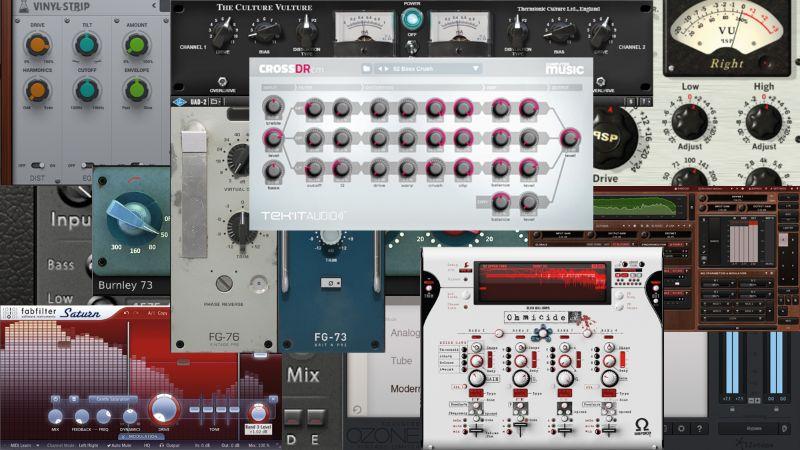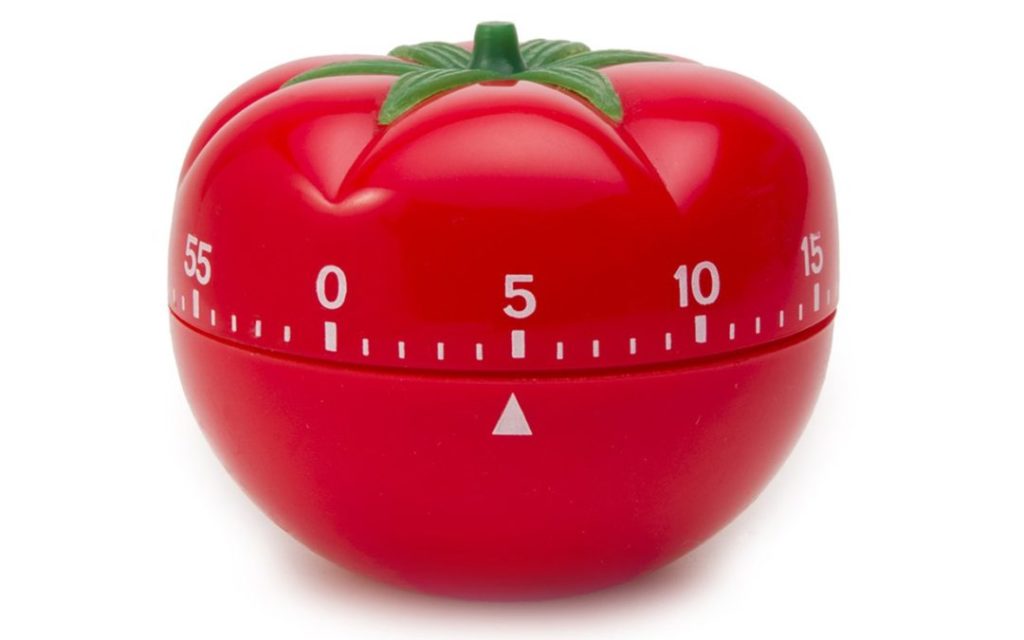Production Tips & Tutorials, Tutorials
How To Finish 10X More Tracks (13 Producer Tips)

Do you keep starting new tracks and never finishing them?
Does your hard drive look like a huge cemetery of drafts and unfinished tracks?
It goes like this: you start a track, and you keep tweaking and tweaking but never actually move on to the next step of finishing the track.
I know the feeling. I’ve been there.
But it doesn’t have to be this way.
By changing the way you think about producing music, and applying a few productivity techniques, you might soon be on your way to finishing so much more. And trust me, you will absolutely increase your results and satisfaction along the way.
In fact, in this post, I will provide a framework showing you how to finish 10X more tracks in the next 12 months.
1) Change your mindset

First of all, change your mindset to aim for the result you want to achieve.
Focus on getting results (= complete songs).
If you’re reading this post, it’s probably because you are at least partially unhappy with your productivity and the number of tracks you finish.
Just like anything in life, the results you get will usually be aligned with your actions, and your actions will usually be aligned with your goals. But when you open your DAW, do you do it with a specific purpose/goal in mind?
If not, try something new today. Open your DAW with a clear goal: finishing your track.
Your mindset should change from “I’m going to open my DAW, tweak my new track idea, and we will see where it takes us” to something like “I’m finishing this track today before 10 PM whatever happens”.
Part of the change in mindset is also knowing that it’s not actually possible to “finish” a track. Instead of focusing on making something perfect, focusing on getting better at the whole process of making full songs.
2) Set a 10X goal and break it down

Set a 10X goal. Then define how you will achieve the goal, and plan all your actions to get there.
Everything great starts with an ambitious goal in mind.
This trick is borrowed from the business book “The 10X Rule” by Grant Cardone. It’s actually meant for setting ambitious business goals, but it can be used in ANY area of life.
How many tracks would you like to FINISH this year? 10? Then aim to finish 100 tracks this year. Yes, that’s really ambitious, but it’s possible.
Now… what needs to be done in order to finish 100 tracks this year? It basically comes down to creating & finishing 2 tracks every week. Now that doesn’t seem so huge, does it?
Take some time to really define a precise goal for this the next X months, and plan it out ahead. This gives you a benchmark that will tell you if you’re on track or not.
The beautiful thing about being ambitious is that even if you fall short compared to your 10X goal, you’ve still got great results and you will definitely be proud of your achievement.
3) Get Energized

I’m not necessarily talking about coffee or energy drinks here (although coffee has proven health benefits and works great for some people).
I’m talking about creating everlasting energy, day in & day out, achieving mental clarity and motivation simply by fueling your body with the right foods and practices.
A healthy body and healthy mind go together. Food, drinks, exercise, thought patterns, how you approach each of these aspects of your life can either make you feel energetic and focused, or they can kill your motivation, mental clarity and stop you from achieving your goals.
Ask yourself if there is something you could be doing right now to make you feel better for the rest of the day (and tomorrow!).
My favorite ways of increasing energy & motivation:
- intermittent fasting (skip breakfast, just have a cup of coffee). If you’re anything like me, you will experience the best mental clarity, focus, and motivation you’ve ever had.
- aim to remove processed foods from your diet and focus on clean whole foods instead.
- perform a quick workout every day / walk 30 minutes every day.
- make sure you get enough quality sleep by following your circadian clock
3) Finish EVERY track you start
This rule is all about FOCUS.
If you are only working on one thing, it’s so much easier to keep a high amount of focus and keep moving forward.
Alternatively, if you have 8 original tracks started, 2 remixes, and 4 collaborations, you are most likely all over the place and although you might feel “busy”, you’re not necessarily finishing more stuff. In fact, how many of these 14 tracks will you actually finish?
Don’t allow yourself to start a new track until the current one is finished (but store any new ideas for later in a “backlog”). In fact, from now on, you’re working on only one track at a time until it’s done.
The track isn’t turning out so great? Still make it a full song and export it. You’ll still learn something in the process and you’ll have the satisfaction of finishing something. It doesn’t matter if it’s not very good, because you know every next one you pump out will be better.
Remember, it’s better to finish 1 track than to start 10 and finish none.
4) Set a deadline

Try setting a deadline for completing your track.
This is a brain hack based on Parkinson’s law. The law goes “work expands so as to fill the time available for its completion”.
This means the more time you have available to complete a task, the more time it will end up taking before it’s done.
Because of this, if you don’t set a clear deadline for finishing a track, you’re actually making the whole process longer and harder for yourself.
So try setting a deadline.
For example, if you’re working on a new track and you have the whole day in the studio today, try “I will finish this track no later than 10 PM”.
As a result, you will probably move a lot faster during the day and when 10 PM comes, you will probably realize the whole arrangement and production are done.
5) Refine your process (and follow it step-by-step)

Just like any other activity, making a track can be systematized into a process. Once you’ve identified your process, all you have to do is to follow the steps.
Here is an example of a basic track creation process:
- Looking for a track idea.
- Melody / chords idea. Here’s what you need to focus on at this point.
- Sound selection
- Arrangement. Remember the goal is to write a piece of music.
- Production. FX, automation, etc.
- Mixing.
- Getting closure, finishing the track and moving on. This is so important but we rarely think about it.
This requires you to separate tasks like shown above, and not attempt to do everything at the same time.
For example, when you’re starting a track, the goal is to find a good melody and chords that work well together. Only once you have the melodies and chords should you allow yourself to move to the next step (sound selection).
Then, once you’re working on your sound selection, you’re focusing 100% on that, not on mixing the sounds together or adding FX, delays, and reverb.
If you start working on the production and mixdown before the arrangement, you could end up in the production loop forever.
Move through every step in the production process with 100% focus. Composition, then sound selection, then arrangement, then production, then mixdown). This is a greatly efficient framework to work in.
As a result, when you open your DAW, your task is to move your current track idea from the current step to the next step of the process.
Just try it for your next track. You’ll be amazed at the speed at which things come together!
Working with a process also has a very powerful long term side-effect: it forces you to spend at least some time working on each specific step and allows you to get better at ALL steps very quickly because you are effectively practicing all of them. In contrast, if you’re doing “everything” at the same time, you might unknowingly stay average at composition or mixdown for years because you never really spent serious time focusing on this task.
6) Mixdown goes in a separate project
This is a logical extension to tip number 5. Try doing your mixdown in a separate project than your “production” project.
Once you have finished your composition, sound selection, arrangement, and production, you need a way to effectively focus on the next step in the process, which is mixing.
To achieve this, you want to remove the temptation of continually tweaking sound sources, melodies, and so on. So bounce all your channels from your DAW, and load them in a new clean project where you can focus on the task at hand (mixing!). This makes it a lot easier to work with levels, panning, EQs, groups and so on.
Of course, sometimes you need to change one of your individual channels, and you will have to “waste” a bit of time exporting that channel from the “production” project again.
But trust me, it’s worth the hassle. If you’ve never tried this, we highly suggest experimenting with it. You’ll be surprised at how much being able to focus 100% on the mixdown improves the quality of your tracks and your work speed.
7) Use references
Use other people’s music as a reference as much as possible.
Listening to a reference track from another artist allows you to learn very quickly and also diagnose what’s wrong with your tracks and even find new ideas. This is useful at every point in the production process:
- finding melody and chord ideas from other tracks/genres
- inspiring yourself from a specific sound
- figuring out the arrangement you want
- diagnosing problems in the arrangement & energy flow of your track
- diagnosing problems in the mixdown and which elements might be missing from your track
You can move a lot faster by modeling your track after someone else’s (of course, never plainly copy someone else’s work and always try to come up with your own musical ideas!).
8) Limit your tools

I strongly suggest limiting your number of tools (especially synth plugins). For example, when it comes to VST synths, we recommend choosing from this list, but you don’t need a dozen synths to make good music. Pick a few of your favorites and stick with them.
The same goes for FX plugins. You don’t need 10 different delays and 10 different reverbs. Find the ones you are most comfortable with and learn how to use them correctly.
By removing some of the options at your disposal, you’ll make it easier for you to FOCUS on the actual work, and work faster because you know your tools well enough.
If you want to learn new tools now and then, that’s awesome, but you might want to set some time aside and do this outside of your productive work sessions.
9) Don’t reinvent the wheel
With thousands of sample packs, templates, midi packs, tutorials and soundbanks available online, you do NOT need to reinvent the wheel.
Remember, your main goal now is to become a track finishing machine. You don’t want to waste precious time trying to reinvent everything from scratch.
This means you have to take advantage of what’s already out there. This includes existing soundbanks for your favorite synths, one-shot samples, and drum loops that will come in handy whilst keeping you inspired. You can find thousands of premium packs at our store.
For example, you don’t need to know how to create the perfect kick drum, because there are hundreds of amazing kick drum packs out there for every genre. You can also use online tutorials to learn faster. We offer quite a few professional tutorials at our store!
10) Use the Pomodoro technique

You can try using the proven Pomodoro technique for maximum productivity and to avoid distractions.
A “Pomodoro” is a 25-minute work session followed by a 5-minute break. The breaks between each session allow you to stay focused for a longer period overall.
When you’re about to start a studio session, decide how long it’s going to be. Also, define clearly what your goal is (for example “I’m going to spend 2 hours doing the MIXDOWN of my current track”). This means you will be doing 4 Pomodoros.
When you’re in a Pomodoro, you’ll want to focus 100% on your current goal. We even suggest that you close your browser window and mute your phone until your next break. You’ll be amazed at the difference this makes!
11) Remove interruptions

Whenever you get interrupted, it takes you some time to get back into the flow. That’s why you want to avoid interruptions as much as possible to increase productivity.
There are two types of interruptions: external and internal.
- External interruptions come from the outside: someone calls you on the phone, or you get desktop notifications that cut you in the middle of your work.
You can easily remove external interruptions nearly entirely by muting your phone and leaving it in another room, disabling notifications on your computer, until your work session is done. None of this is useful when working on music. If you live with other people or family, let them know that you will be doing deep work for X hours and you’d rather not be disturbed.
- internal interruptions come from within you: they happen when you get sidetracked, bored, tired, and/or you feel like having a break even though your work session is not over yet.
How do you avoid getting sidetracked?
When working on a track, you’ll sometimes come up with new ideas that could be useful for other tracks in the future. To avoid getting sidetracked at these moments, use a notepad to write down ideas, and/or save specific ideas in a temporary folder that you will go through later. Now that you’ve captured your idea, you can safely go back to your task at hand.
How do you avoid getting tired/bored/lazy?
This is related to point number 3). If you’re energized, you’re less likely to get tired, bored and lazy.
12) Save building blocks to re-use them later
Save the channel presets, FX chains, MIDI files, and synth presets that you like the most for your next tracks.
Once you have this library of sounds, melodic patterns, chords and templates at your disposal, you’ll feel very much empowered. This works best if you keep it neatly organized so you know where everything is.
You can even use a template with all your channels, FX chains, etc. already set up. You can make your own, or buy pre-made project templates made by other artists.
For example, we sell a trance “starting template” by Adam Ellis for trance music. , which includes all channel settings, processing presets and everything set up to make a solid trance track.
13) Find alternative sources of inspiration

This is something you can do before starting a new track, or in between work sessions. It’s a great way of coming up with new ideas for your next track, but finding alternative sources of inspiration could also expand your repertoire and open you up to creating new types of music in the future (yes, that’s a good thing!).
Some good ways of getting inspiration include:
- listen to music in the same genre as the genre you’re creating
- listen to music in other genres
- watch a movie or a series (maybe you’ll hear some inspiring chords)
- grab a MIDI pack with pre-made melodies to kick-start your inspiration
- meditation (clear your mind)
- a 30-minute break outside (go for a walk, in nature if possible)
You can keep an “Inspiration Folder” on your computer where you capture all the ideas you have at any moment. Then you can simply go through this folder for a quick inspiration boost.
Find what works for you, and don’t be afraid to mix it up and do something new for a change in perspective.
Conclusion
We hope these tips will be helpful to you! Did you learn anything new, or are you already using some of these tricks?
Do you have any other productivity tricks that could help other producers out there? Let us know in the comment section!










2 Comments
Sonar Zone
Great post and very good tips. I have shared this on my website http://www.sonarzone.co.uk ( there are actually 14 tips – there’s are two #3 tips – so that’s another bonus)
Sheala
its a very comprehensive post but just one psychology tip. What I have learned for some people the “force yourself to make 100 songs when you struggling with one wont get them to 2 songs a week. It might make them overmotivated and quit. RAge, anxiety, what not you call it, the basic problem is you can have to be motivated too much.
Motivation works best when in the Goldilock zone – too big and its bad, too low, and its bad. To make motivation work, it should be just right.
Another thing – learning curve. There are sample packs, sure. What If people struggle with bassline melodies? What if there is not the right tutorial how to arrange the pieces? I have my roadblocks, and do not want to ignore them, I know I need to know what I am doing.
Otherwise its a gret thing. I am lmore inclined to look for loops, samples and presets now, these pomodoro techniques are really solid, used by top computer developers.
Thank you for the article